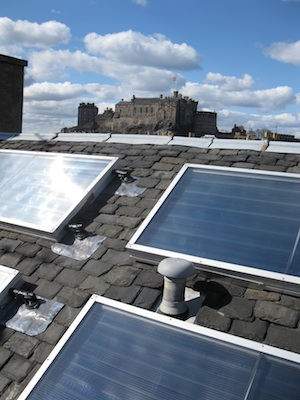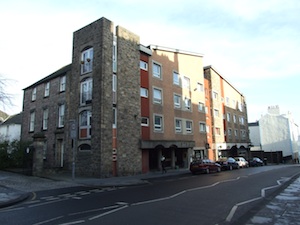Towards a Sustainable Energy City
Edinburgh has been the Scottish capital since the 15th century. News Archives: the Old Town, dominated by a medieval fortress; and the neoclassical New Town, whose development from the 18th century onwards had a far-reaching influence on European urban planning. The harmonious juxtaposition of these two contrasting historic areas, each with many important buildings, is what gives the city its unique character. The Old and New Towns of Edinburgh were inscribed in the World Heritage list in 1995.
Edinburgh has become a worldwide reference in demonstrating that energy transition towards sustainable models in historic cities is possible. 爱丁堡世界遗产 (EWH), a charity funded by a broad alliance of partners, has deployed a wide array of initiatives and projects that define a way towards energy sustainability.
能源遗产 & 可再生遗产
The Old and New Towns of Edinburgh World Heritage Site boast an outstanding variety of buildings with different architectural styles, 材料和独特的字符. 这些传统建筑已在环境可持续性方面有一定的益处, 包括他们的长寿, 热式质量, 当地采购的材料和自然通风. 流行的看法相反, it is possible to reduce energy inefficiency in traditional buildings, 不影响其真实性.
Building conservation and energy efficiency are both key aspects of sustainability for Edinburgh World Heritage (EWH). Traditionally-built properties were built to last: many have been standing for hundreds of years, and well-maintained properties will continue to stand for many more. In order for them to continue to be comfortable in the future – without putting occupants at risk of fuel poverty – EWH promotes a range of viable interventions than can be adopted to improve their energy efficiency.
In partnership with Edinburgh-based Changeworks, EWH promoted the Energy Heritage project, providing a guide to improving energy efficiency in traditional and historic homes, covering all aspects of construction.
As a complement, the Renewable Heritage project sought to introduce clean energy technologies into traditionally-built, protected properties in Edinburgh’s Old Town, 一个保护区,被联合国教科文组织列为世界遗产的一部分. This work built on the success of Energy Heritage project, 随后一直在国内和国际上公认的最佳实践的一个例子. 可再生遗产已经表明,在历史悠久的住宅的可持续性和能源效率可以进一步敏感和适当使用清洁能源发电系统.
Gilmour’s Close project
Gilmour’s Close is a 4 storey, 19th Century stone tenement, with commercial ground floor, located in the World Heritage site of Edinburgh’s Grassmarket. Refurbishment of this building was completed in 2008 to provide social rented and supported housing for Hillcrest Housing Association.
The refurbishment process sought not only to conserve the historic aspects of this listed structure, but also to incorporate low energy principles to the design in the form of ground source heating, passive solar strategies, mechanical ventilation with heat recovery (MVHR) and upgrade of the fabric’s thermal performance by internal lining.
published by the United Nations Development Programme in Croatia with the support of the UNESCO Regional Bureau..
The idea of developing sustainable energy projects in heritage cities has been taboo for a long time, and in many cases it has been considered incompatible with their conservation.
Edinburgh’s experience shows that good levels of energy efficiency could protect the sustainability of traditional homes (both their fabric and their function), and ensure that householders achieve affordable warmth and improved comfort levels. It has also demonstrated that clean renewable energy can also be generated on site and on a much smaller scale, without compromising the quality and authenticity of the heritage. With the appropriate knowledge and good governance, microgeneration has a future role to play in historic cities.
Edinburgh can be a powerful performance reference for the 252 cities that host properties included in the World Heritage List, and for the thousands of historic cities and villages within the World Network of Biosphere Reserves. 其实, 有可持续的能源很少经历在历史悠久的世界性城市.


















